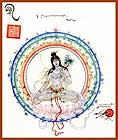|
|
|
|
|
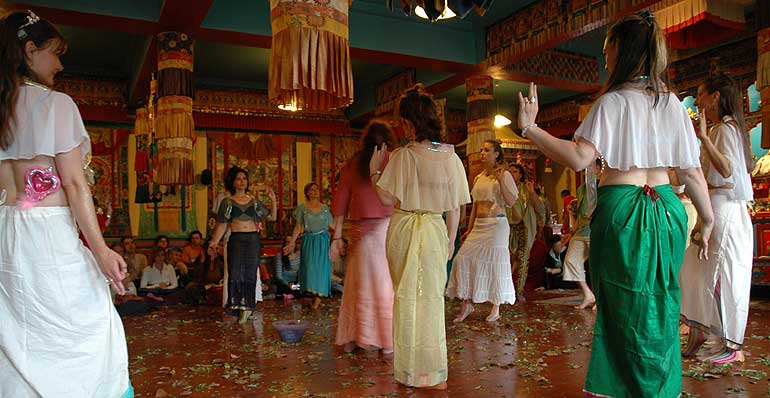
|
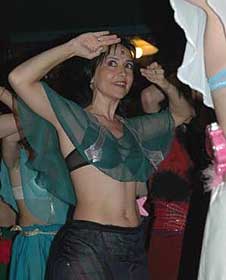 |
In the
Tara Dance Workshop
we learn about Tara's wisdom and compassion, and how these connect with our own. We deepen our experience and understanding of the bodhisattva vow, and we practice the Mahamudra instructions on realizing the true nature of mind. |
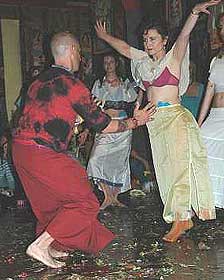 |
The dance follows a sadhana [1]
composed by
Khenpo Tsultrim Gyamtso Rinpoche himself.
It tells the story of Tara's great love and courage, her path to enlightenment, and the way she protects sentient beings from fear. |
|
Through Tara's blessing,
when we learn her dance we can directly experience
how compassion, wisdom, and faith protect the mind
from being afraid. It is a precious opportunity to relax deeply and to look directly at the essence of our experience.
|
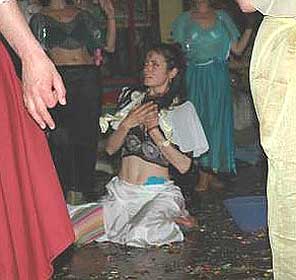 |
|
|
|
|
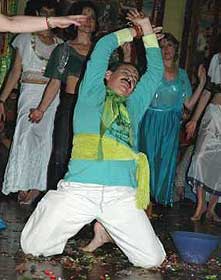 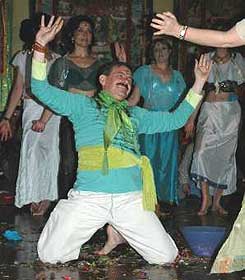
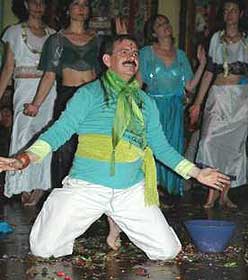
|
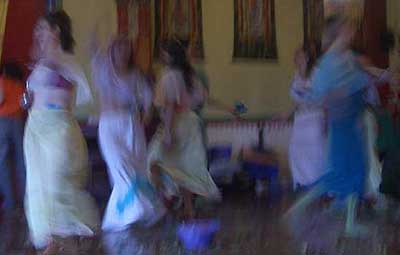 |
Song and dance are a special and ever-present part of Khenpo Tsultrim Gyamtso Rinpoche’s teachings on how to connect with the true nature of reality using both our bodies and minds. Many people—men and women, old and young alike—have enjoyed and benefited from learning Rinpoche’s dance tradition in the past.
|
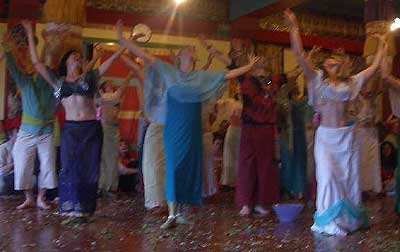 |
Khenpo Rinpoche has often stated that if we would like to transform the world into one of peace and happiness, we should perform this dance of the noble liberator Tara, the embodiment of the great mother Dharmakaya. When we gather to perform this sacred dance, Tara’s mandala magically unfolds and her blessings are tangibly present. It is a wondrous event.
|
|
|
No previous dance experience is required, and men and women of all ages and physical condition
are welcome. The Workshop culminates in a dance performance for the audience of the student participants,
and invited friends and loved ones. The performance is understood as an offering to all Buddhas
and bodhisattvas and is a celebration of the joy we feel because of having met the Dharma in this lifetime. However, it is perfectly acceptable for people to learn the dance but not participate in the final performance
if they do not wish to do so.
|
 |
|
Alexandra Kalinine,
a French student of Khenpo Rinpoche, leads the Tara Dance Workshop.
Khenpo Rinpoche has appointed Alexandra to be the dance teacher for his own sangha and, in a recent letter to Sakyong Mipham Rinpoche, Khenpo Rinpoche recommended her as a dance teacher for the Shambhala mandala as well.
All students, whether inclined toward dance or not, are encouraged to attend the Tara Dance Workshop.
As Alexandra Kalinine describes:
"Dancing in this context is not about a dance performance or being a good dancer. It is about being genuine. In performing the Tara dance we renounce everything that is a barrier between us and others; being ourselves while serving a common cause. This Tara Dance is a method to actually connect with the wind energy of joy and power within us, to ride this energy, and to conquer it. While we are dancing, we can stop judging ourselves. We can relax and appreciate our body and mind in a very simple way, even in the middle of confusion. In fact, we can jump straight into our confusion, not letting ourselves be stopped by our clumsiness, but jumping straight into it, landing with our two feet smack in the middle of the puddle of our seriousness. Then we can let this confidence radiate out, benefiting sentient beings."
[1]a sadhana is a tantric parctice for realizing the nature of a particular deity.
|
|
| |
|
|
|
|
|
